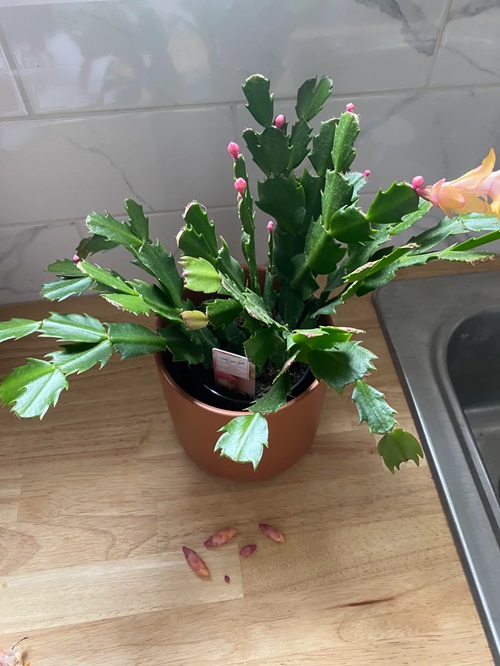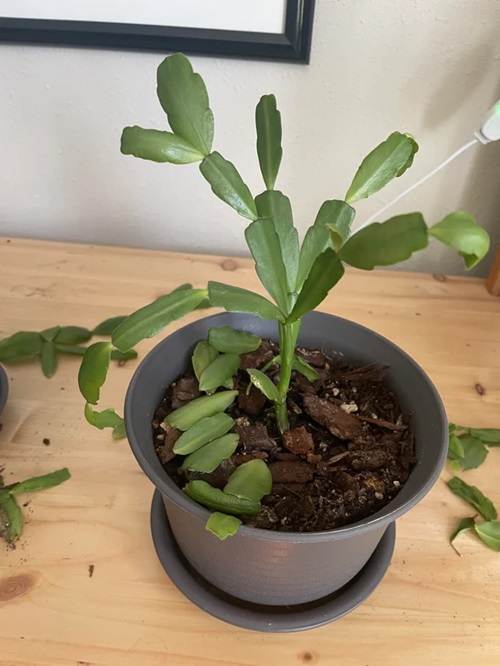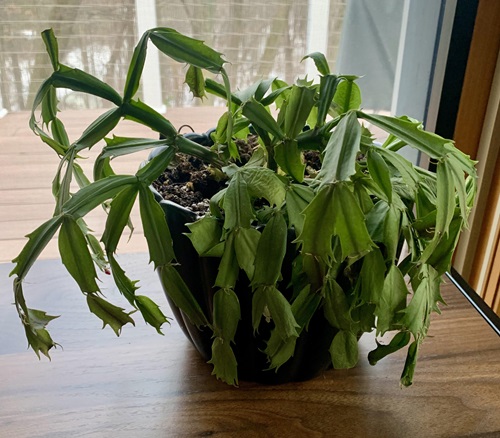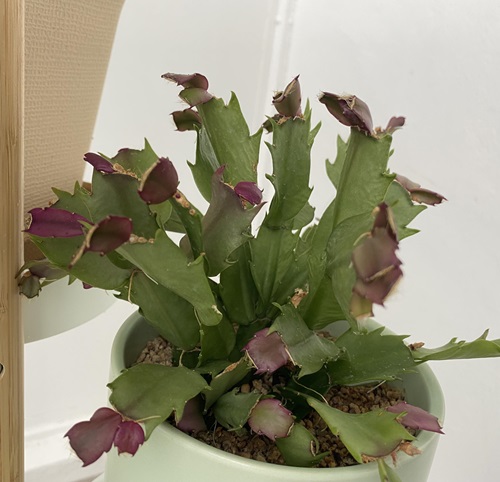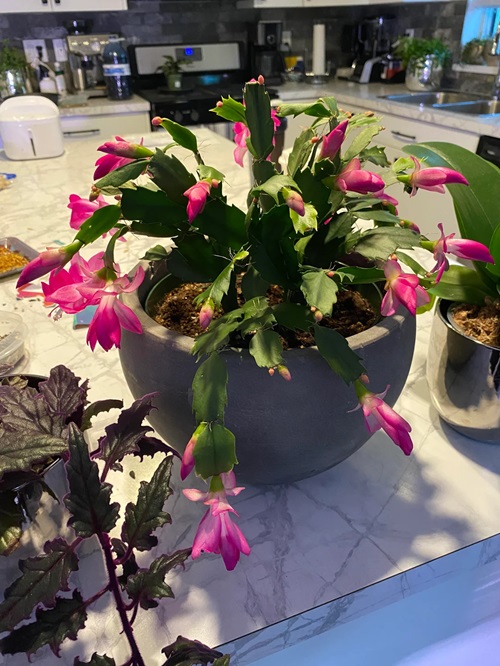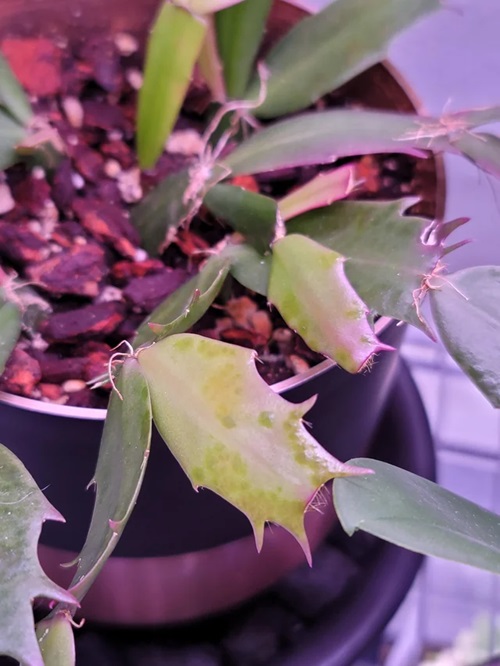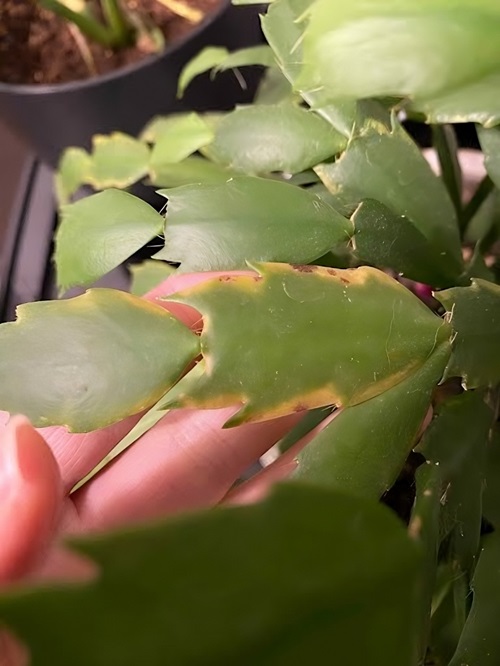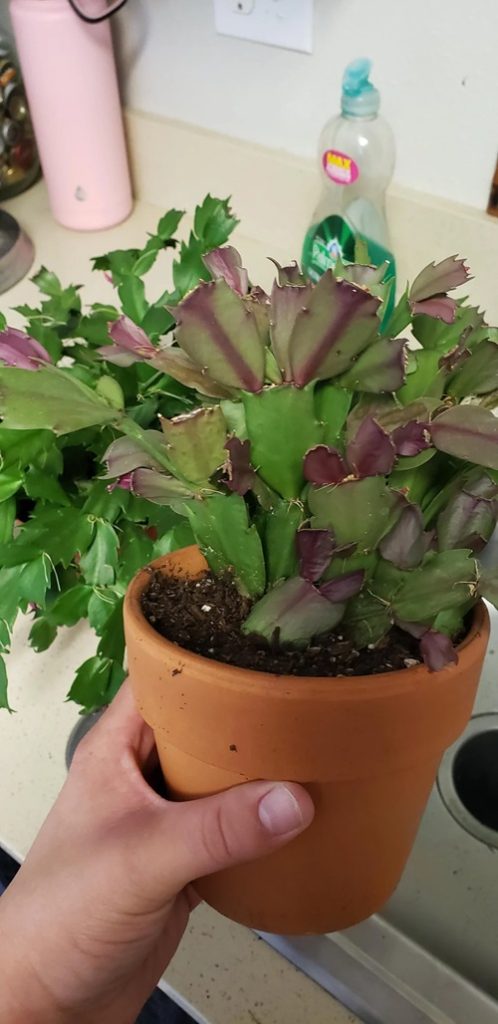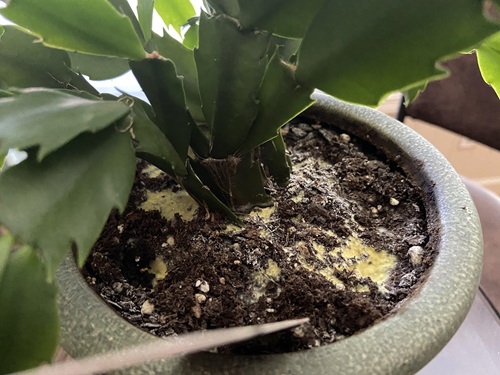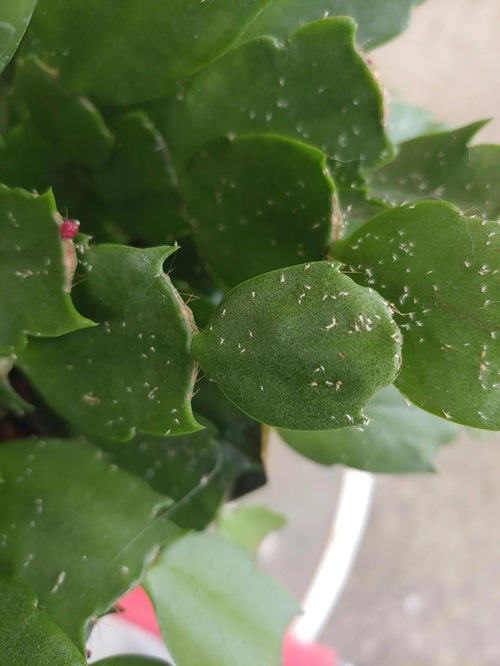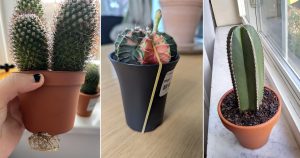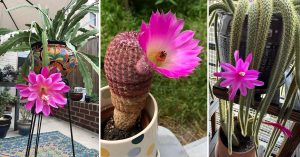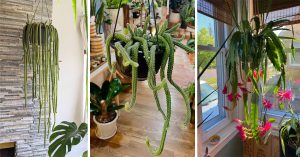Troubled with the Common Thanksgiving Cactus Problems? Find out what issue you exactly face and learn how to fix that—Keep reading!
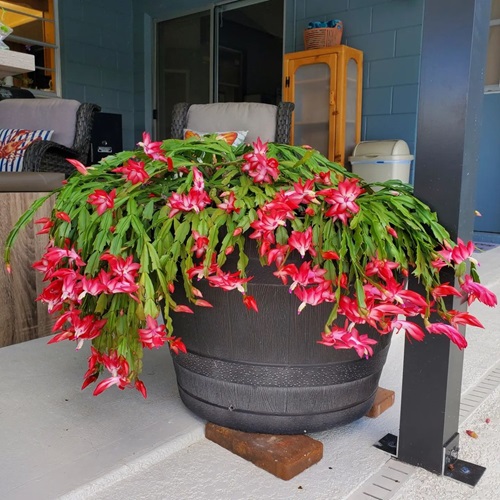
Thanksgiving cactus, with its beautiful flowers, can brighten any home. But what if your cactus isn’t looking its best? You need to catch the issue and solve it—Don’t worry! We will help you with that!
Common Thanksgiving Cactus Problems Plus Solution
1. Bud Drop
Ever excited for your cactus to bloom only to see the buds drop? This can be a bummer. Bud drop usually happens because of sudden temperature changes, drafts, or inconsistent watering.
To prevent it, keep your cactus in a stable environment with no drafts, and water it consistently. Once buds form, try not to move the plant around. Keeping the environment stable is key.
2. Falling Leaves
If your cactus starts dropping leaves, it’s probably stressed out. This can happen due to improper watering. Both too much and too little water can cause leaf drop.
You should check the soil regularly and water when the top inch feels dry. Also, make sure your cactus isn’t near sudden temperature changes or low humidity, which can stress it out.
3. Limp and Wrinkled Segments
If the segments of your cactus look limp and wrinkled, it’s likely thirsty. Thanksgiving cacti like balanced moisture—not too dry, not too wet.
Water it thoroughly when the soil feels dry to the touch. Also, ensure your pot has good drainage to prevent water from sitting at the bottom, which can lead to root rot.
4. Squishy and Discolored Segments
Soft, discolored segments often mean your cactus is overwatered or has root rot. Let the soil dry out completely before watering again. If root rot is severe, you might need to repot your cactus in fresh, well-draining soil and remove any rotten roots.
5. Blooming Issues
Want your cactus to bloom beautifully? It needs the right mix of light and temperature. Holiday cacti are short-day plants, which means they start blooming when nights are longer and days are shorter.
To trigger blooming, they need at least 12 hours of uninterrupted darkness each night for about 5-6 weeks. If the darkness is interrupted for more than 2 hours, the flower buds won’t form.Once the buds are set, the length of day and night won’t affect the flowering process.
6. Edema
Edema looks like small, corky blisters on the leaves and is caused by inconsistent watering or high humidity. Prevent edema by watering your cactus consistently and ensuring good air circulation around it.
7. Browning Leaf Tips
If the tips of the leaves are turning brown, it might be from over-fertilization, poor water quality, or improper watering. You should use a balanced, water-soluble fertilizer at half strength during the growing season, and water with distilled or rainwater if your tap water has high salts.
8. Red or Purple Leaves
Leaves turning reddish-purple? Your cactus might be getting too much light or experiencing stress from temperature extremes. Just move it to a spot with bright but indirect light, and ensure it’s not exposed to very hot or cold temperatures.
9. Mold and Mildew
Mold or mildew often grows when your cactus is kept too damp or in a poorly ventilated area. Reduce watering, ensure good air circulation, and remove any affected segments to prevent mold from spreading.
10. Pesky Pests
Pesky pests like aphids, spider mites, mealybugs, and scale can infest your cactus. You have to regularly inspect your plant and treat any infestations with insecticidal soap or neem oil. Diseases like root rot and gray mold can occur when you overwater your cactus.
Improve drainage, reduce watering, and use fungicides if needed.
Did you get a Thanksgiving cactus and face any of these issues? Do try these tips to solve your plan’s issue, and don’t forget to share your

